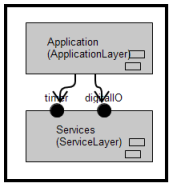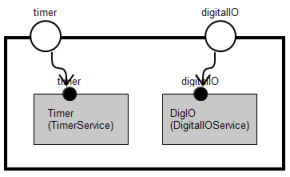Layering
Description
In addition to the actor containment hierarchies, layering provides another method to hierarchically structure a software system. Layering and actor hierarchies with port to port connections can be mixed on every level of granularity.
-
an actor class can define a Service Provision Point (SPP) to publish a specific service, defined by a protocol class
-
an actor class can define a Service Access Point (SAP) if it needs a service, defined by a protocol class
-
for a given actor hierarchy, a LayerConnection defines which SAP will be satisfied by (connected to) which SPP
Notation
For the graphical and textual notation refer to the following table:
| Graphical Notation | Textual Notation |
|---|---|
|
|
|
|
|
|
|
|
|

